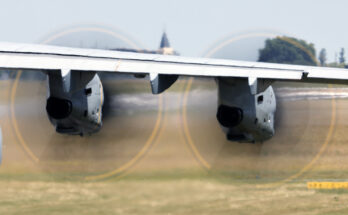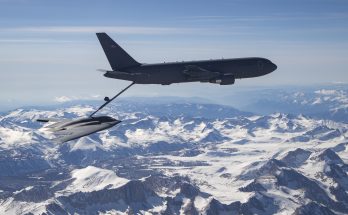For nearly half a century, the one constant in Japan’s defense approach remained its budgeting. Year-in, year-out, regardless of government, Japan has earmarked no more than 1 percent of its GDP for defense.
This informal cap – put into place under Prime Minister Takeo Miki in 1976 to deflect domestic criticism over military spending by placing limitations on the country’s defense outlays – has since outlived its usefulness in the eyes of Japan’s current leadership.
Confronted by an increasingly polarized global environment further splintered by the Russian invasion of Ukraine, Tokyo is opting to reexamine its defense funding model.
A revision of how Japan approached defense had already begun during the previous administration of Shinzo Abe (December 2012 through September 2020).
Abe’s time in office saw the easing of a constitutional ban on Japan’s ability to engage in collective self-defense, the loosening of the country’s self-imposed weapons export restrictions, deepening military-to-military relations with the United States under the April 2015 revised bilateral defense guidelines, and making the formation of a new marine amphibious brigade a focus of national security policy.
In total, the Abe era saw a massive shift in Japan’s defense approach.
But despite this, the annual price tag remained cemented in place: 1 percent of annual GDP allocated to the defense budget.
Now Prime Minister Fumio Kishida is preparing to chart a bolder course for Japanese defense, using the foundation laid by Shinzo Abe to upgrade the Japan Self-Defense Forces (JSDF) and preparing to improve their capabilities beyond a mere defensive posture.
During the run-up to the October 2021 general election, Kishida and his center-right Liberal Democratic Party (LDP) vowed to double defense spending in a bid to accelerate the modernization of the SDF.
Since then, he and his government have held firm to that outlook, with events in Ukraine and Japan’s immediate threat perception (including North Korea’s nuclear ambitions and China’s increasingly aggressive posture and improved military capabilities) serving to underpin this goal.
The prime minister has asked his cabinet to find the funding to bring the level of annual Japanese defense allocations up to 2 percent of GDP (the NATO Alliance minimum standard and one targeted by Japan’s partner, Australia) by 2027, which would place the topline defense budget around $70-$75 billion.
The current topline figure – factoring the rise of the U.S. dollar versus the Japanese yen – amounts to $39.6 billion (¥5.41 trillion).
The aim is to benchmark spending over the coming five years at around ¥43 trillion, or $315 billion – or roughly $63 billion per year from 2023 to 2027.
Such a steep increase in a compressed period will require the government to comb through its ledgers to find any extra revenues or other areas of state spending that could be trimmed to meet its ambitious funding target. Kishida has already stated to his cabinet that in order to fund his defense ambitions the government must secure an additional ¥1 trillion ($7.3 billion) through tax hikes.
The missile acquisition and the growing defense budget have the support of the Biden administration. Administration officials see a deepening alliance with Japan as part of a broader strategy of regional cooperation to enhance security.https://t.co/CxWFZDhCMc
— Michelle Ye Hee Lee (@myhlee) December 12, 2022
More importantly, however, it would represent a titanic shift in Japan’s traditional post-Second World War approach towards national defense.
The obvious question is where would some of this extra money go?
Consideration in Japan to bolstering its own domestic defense production capabilities and development of cutting-edge technologies has been building for years. Manufacture of advanced missiles and development of a new fighter jet (now being pursued through a tri-national engagement referred to as the Global Air Combat Program (GACP) announced with Britain and Italy on December 9) and hypersonic missile defense technology are areas of focus.
Therefore, an increase of the share of government-sponsored research in defense will no doubt be on the table.
Under its fiscal year 2022 defense budget, electronic warfare capabilities investments such as continued development of a standoff electronic warfare aircraft, plus research and demonstration of High-Power Microwave (HPM) radiation technology and procurement of combat aircraft with electronic protection capability (8 F-35As and 4 F-35Bs) are noted. It should be expected that funding research into these key areas will again be pushed forward, but now with greater financial backing.
The ever-important space and cyber domains will remain key focal points as Japan seeks to keep pace with advancing trends.
Finally, creating a counter-strike capability by procuring new and greater quantities of missiles (including the U.S.-made Tomahawk cruise missile) will be atop any acquisition strategy.
The Kishida government is currently working on updating the three key policy documents that shape Japan’s security outlook: the National Security Strategy, the National Defense Program Guidelines, and the Medium-Term Defense Program. Each document serves as a key component within the larger security framework.
The National Security Strategy, first approved by the Abe government in December 2013, outlines Japan’s strategic environment and presents the guiding principles and objectives for the nation’s security policy.
The National Defense Program Guidelines are intended to cover a roughly 10-year period. They outline a defense capability target policy that serves as a guide for the Mid-Term Defense Program, essentially Japan’s military acquisition plan. Both the National Defense Program Guidelines and the latest Mid-Term Defense Program were issued in December 2018.
All three updated documents are to be released by the end of the year. At that point, a clearer picture of future policy will emerge.
In the meantime, the push by the government to double annual expenditure within five years tells a tale unto itself, which is that the “proactive pacifism” as labeled by the Abe administration in the 2013 strategic document is giving way to something bolder.
Indeed, Japan is preparing for its most dangerous security environment since the early 1950s by, in boxing parlance, shifting from a protective crouch to a more balanced stance that will enable it to land punches with greater reach and more power when it feels an imminent threat. The aim is to be able to stand alone in the ring and not require a tag-team partner (the United States) to fight on its behalf.
Though still reflexively defensive to conform with the national constitution, this new stance will offer the ability to strike and, LDP policy-makers hope, in turn provide an invaluable deterrent capability.
At its heart this shifting stance will force Japanese politicians to reconsider the meaning of senshu boei – the country’s guiding policy of strictly defensive national defense – and sell any changes in the court of public opinion. Neither of those will be likely to prove easy – particularly as it pertains to the LDP’s junior coalition partner, the Buddhist, pacifist Komeito.
But then again, first steps rarely are.

Note: The 2023-2027 expenditures in the chart above are estimates based on the stated goals of the Kishida government.
Dan Darling is Forecast International’s director of military and defense markets. In this role, Dan oversees a team of analysts tasked with covering everything from budgeting to weapons systems to defense electronics and military aerospace. Additionally, for over 17 years Dan has, at various times, authored the International Military Markets reports for Europe, Eurasia, the Middle East and the Asia-Pacific region.
Dan's work has been cited in Defense News, Real Clear Defense, Asian Military Review, Al Jazeera, and Financial Express, among others, and he has also contributed commentary to The Diplomat, The National Interest and World Politics Review. He has been quoted in Arabian Business, the Financial Times, Flight International, The New York Times, Bloomberg and National Defense Magazine.
In addition, Dan has made guest appearances on the online radio show Midrats and on The Media Line, as well as The Red Line Podcast, plus media appearances on France 24 and World Is One News (WION).




